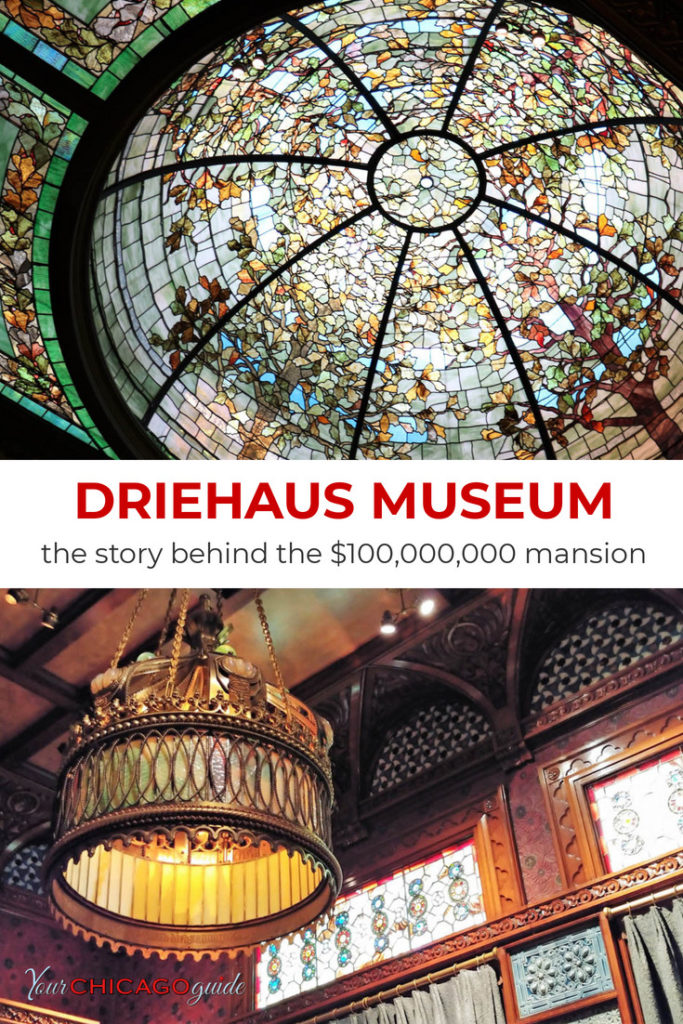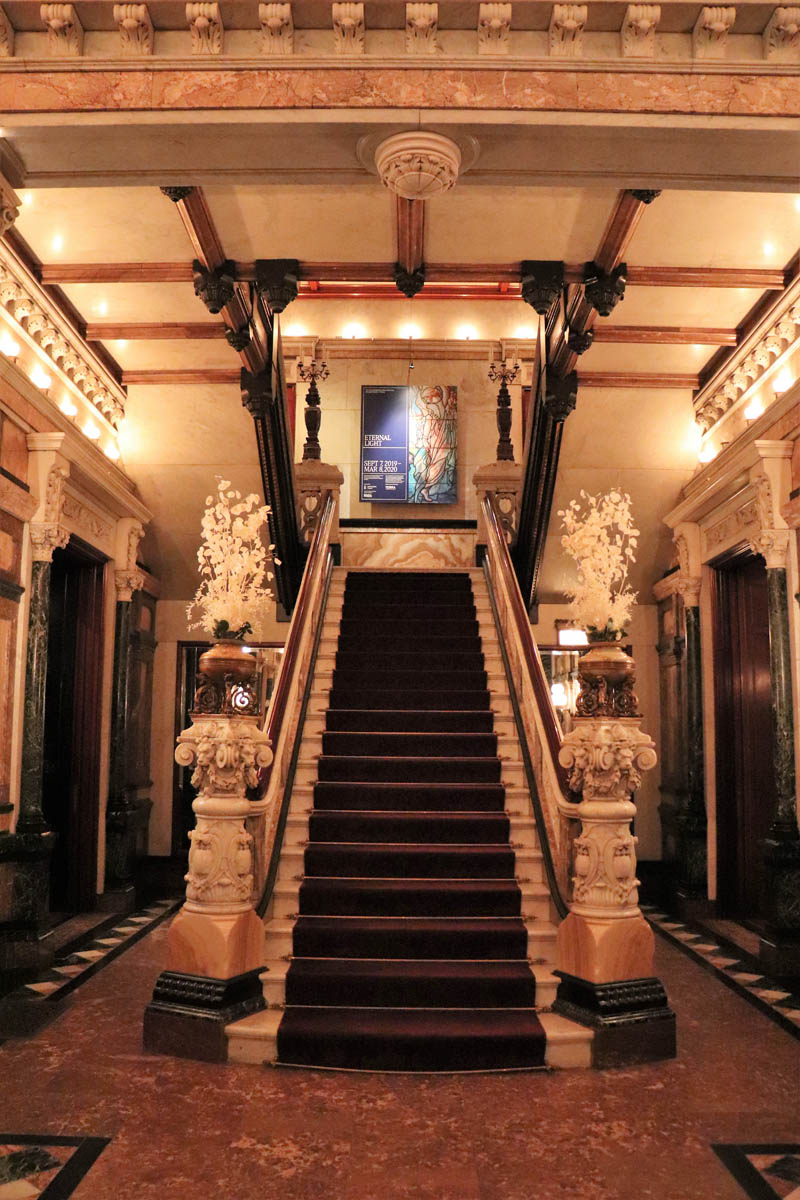Learn the story behind the Driehaus Museum, one of Chicago’s most impressive – and expensive – landmarks.
This story is featured in Living Landmarks of Chicago, a fascinating book that brings landmarks to life. Get your copy today!
When Samuel and Matilda Nickerson decided to build their new home in 1879 they did not mess around.
They chose the hottest neighborhood, the best architect, and the safest and most expensive materials they could find. The Nickersons wanted a place that would be around for a while and they were willing to pay for it.
And boy, did they ever. By the time they moved in four years later, they’d spent $450,000, or the equivalent of $100,000,000, give or take a few thousand. That’s a lot of moolah by any standards, but that’s what happens when you build an entirely fireproof structure and hire three decorators.
Samuel grew up in Chatham, Massachusetts, and Matilda in nearby Brewster. It’s probably safe to assume they knew each other as kids since they were cousins.
Like many young men, especially in the mid-1800s, Samuel wanted to make his mark. His dad gave him boat fare and he headed down the coast when he was 17, joining up with his brother, Sparrow, in Florida. After working with his sibling for a bit at the general store, a few customers were so impressed with Samuel that they loaned him money to open his own place. That went well, but then a fire burned his store in 1857 and Samuel lost everything.
Sadly, that wasn’t the last time that would happen.
During his time as a shop owner he had, “through no plunging or speculation, made some obligations,” according to an article in the Chicago Daily Tribune from March 30, 1890. He made his way to Chicago in 1858 and got into the distilling and wine business. Before the end of the year, he’d returned to Massachusetts to marry Matilda and bring her back west.
Like Potter Palmer, who’d made a chunk of his fortune speculating on cotton during the Civil War, the conflict improved Samuel’s finances.
In addition to liquor he also dabbled in explosives, two items that were in high demand. This financial success enabled him to pay off his creditors in Florida, even though no one came after him for it. In 1863, mid-war, he left the distilling business entirely.
By that time he’d amassed enough money to help start First National Bank of Chicago and was its first Vice President. He invested in the Chicago City railway company. He became President of the bank in 1867, and that same year he helped organize Union Stock-Yard National Bank and held the office of President for that one, too.
Everything looked grand for Samuel and Matilda. They had a fine son named Roland, an active social life, and were rolling in dough. They had a lovely home in a quiet neighborhood at the corner of Cass and Superior.
Until disaster struck again and the Nickersons, like 100,000 other Chicagoans, lost everything. Fortunately, although the First National Bank of Chicago’s building burned to the ground in the Great Chicago Fire, the vaults did not. Within three months, on January 1, 1872, First National Bank was back in business.
While the bank rebuilt quickly, Samuel and Matilda chose to rent on the west side of town. It wasn’t until 1879 that they hired Edward Burling of Burling and Whitehouse to design a new home.
They chose this specific architect because he was known to be passionate about fireproofing. What he came up with would have mollified even the most skittish of fire victims: iron wrapped in brick embedded in mortar, clad in sandstone and limestone, and not a single speck of plaster. There were two fireproof vaults. The home was three stories and 24,000 square feet of extravagance and took four years to complete.
Are you enjoying this excerpt from Living Landmarks of Chicago? Wonderful! Get your copy today.
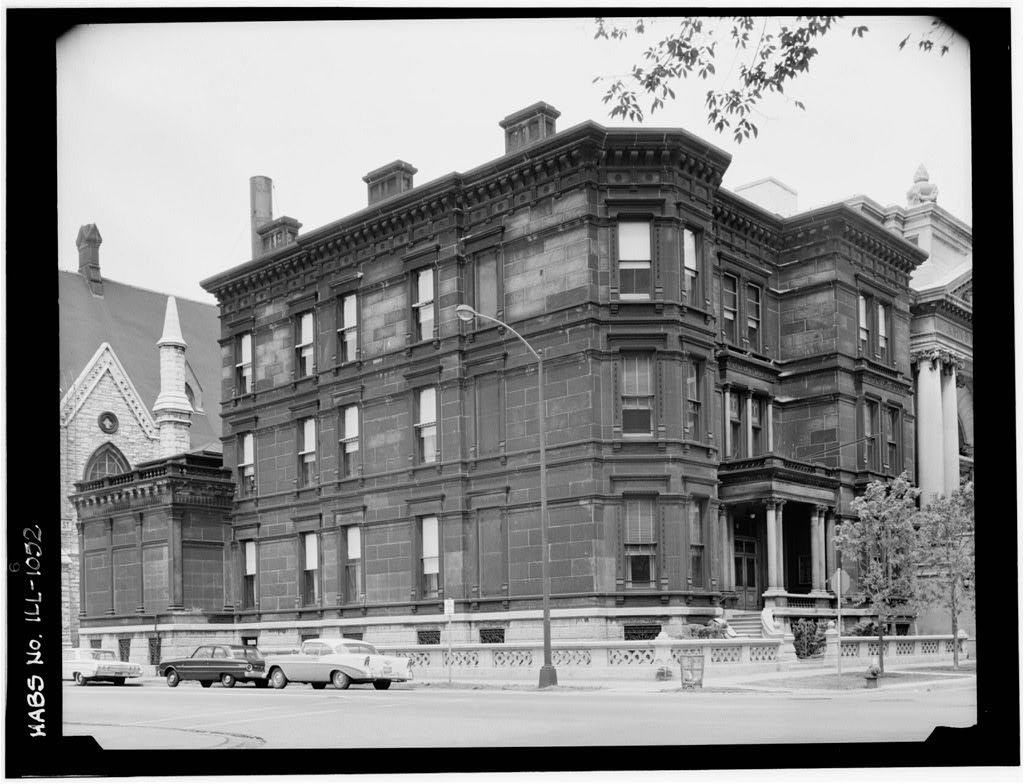
Inside, the Nickersons displayed their wealth with grandiose and nearly ludicrous excess. Each room’s parquet floor was laid in a different pattern. At a time when a working man’s annual wage averaged $350 a year, Samuel and Matilda paid $3 per tile to line their reception room.

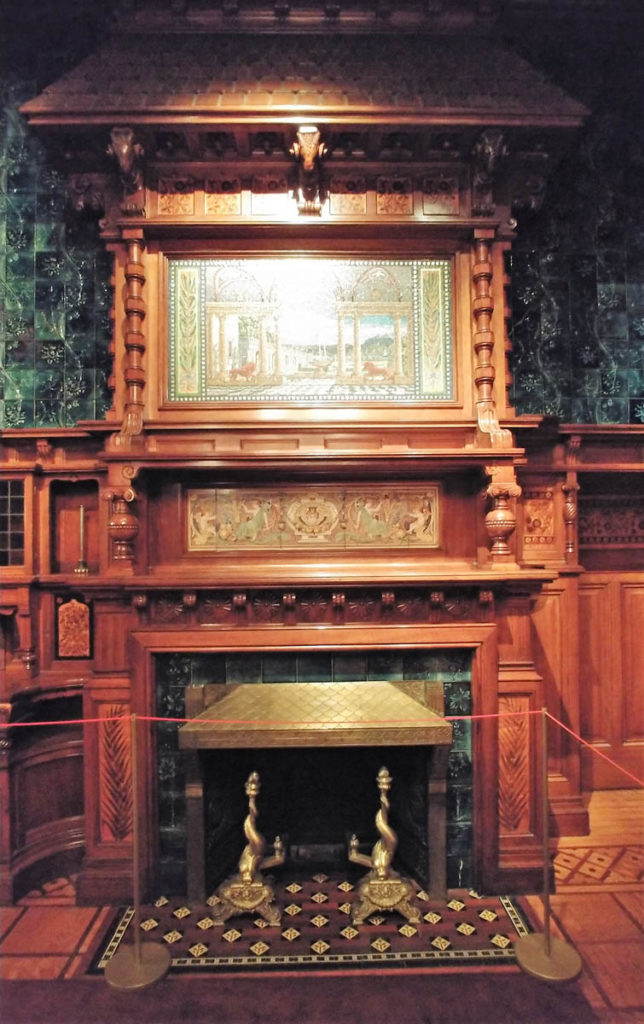

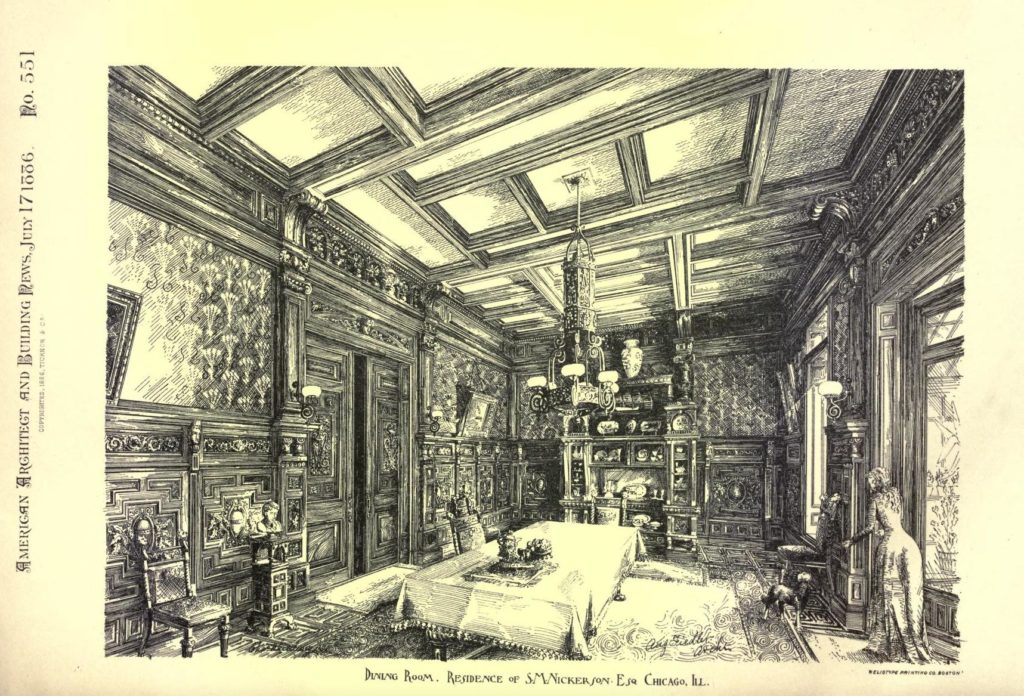

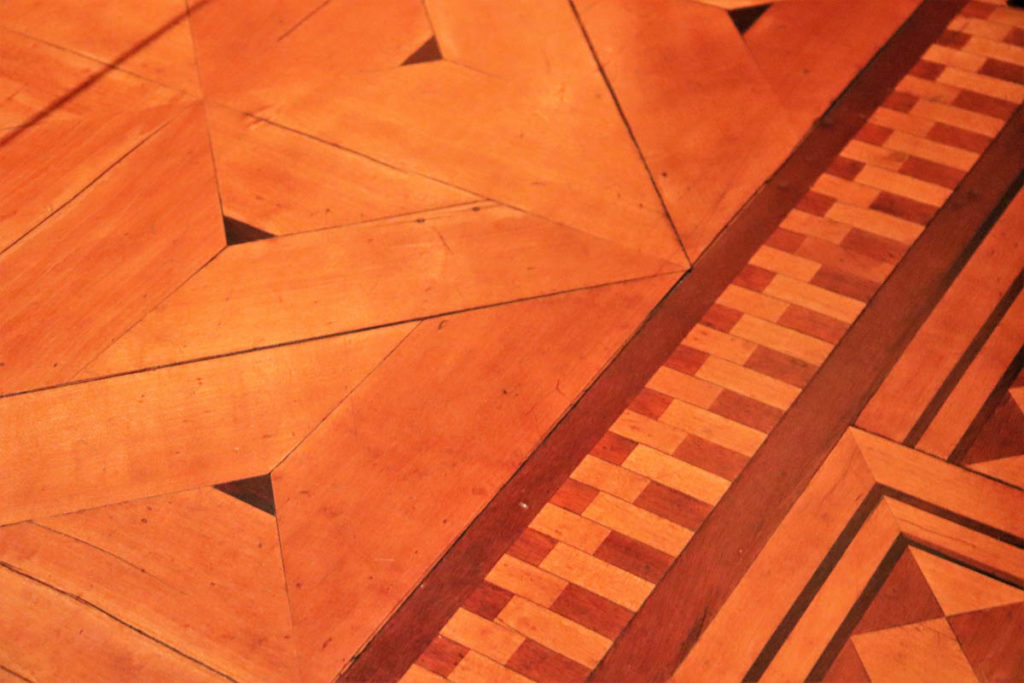

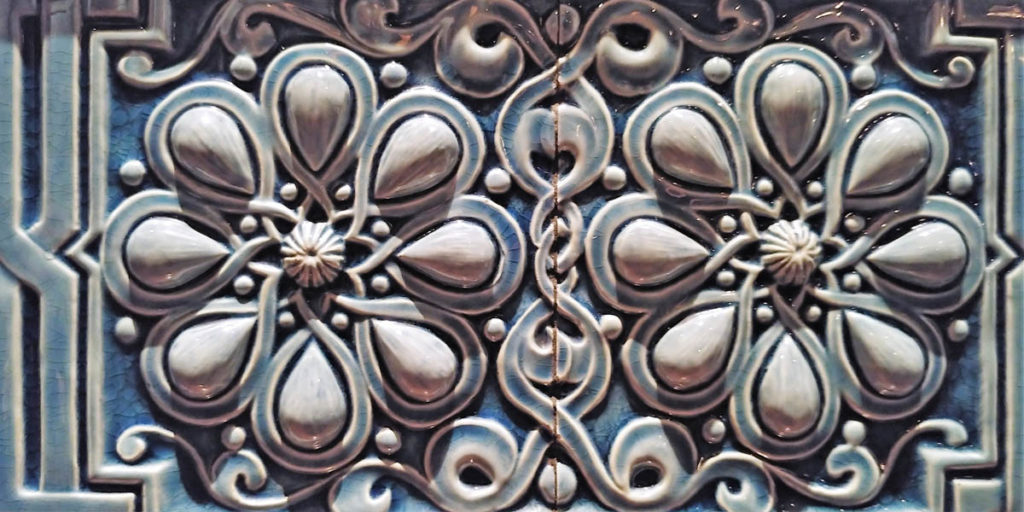
Materials used to create this masterpiece mansion included onyx, alabaster, glass mosaics, ebony, walnut, and seventeen kinds of marble. The latter earned it the nickname of “The Marble Palace.”
It could also have been called a Carved Castle: craftsmen carved the walls of the dining room, the wainscoting, the library’s built-in bookcases, the door jams. After settling in, the Nickersons installed electric lighting, and it was one of the first residences to use this cleaner and healthier alternative to gas lamps.
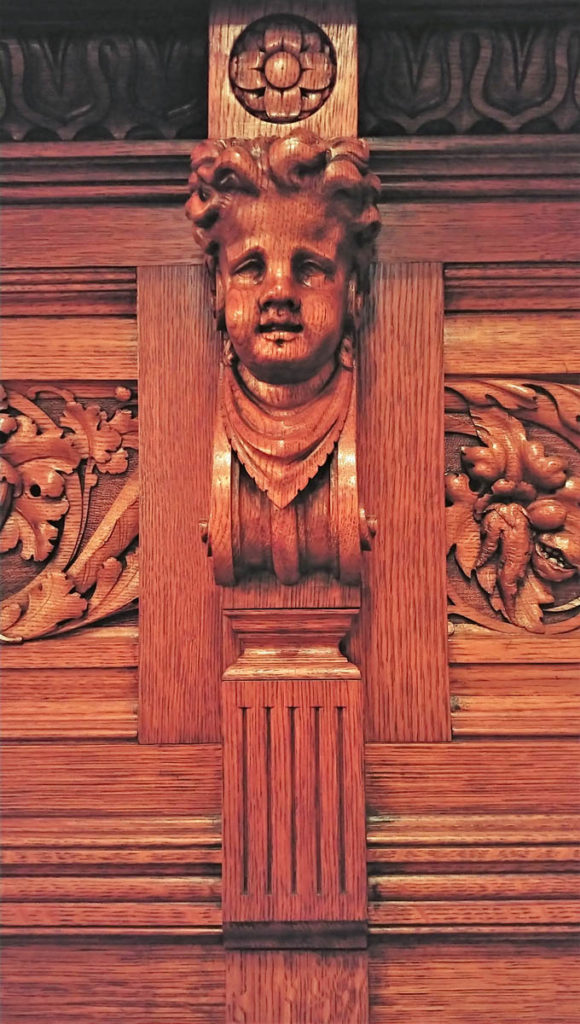



In addition to the reception room, front parlor, smoking room, library, ballroom, and drawing room, Samuel and Matilda’s new home had an art gallery where they displayed European paintings and objects from Japan, China, and Korea.
By the time they retired to New York in 1900, they’d accumulated over 1,300 works of art. Their collection was so vast that when they donated it all to the Art Institute of Chicago, the museum needed two galleries and a corridor to display it.
“Perhaps the most munificent single gift ever received by the Art Institute as the Institute catalogue states, was the collection of art objects and paintings presented by Mr. and Mrs. Samuel Nickerson. For the housing of these beautiful art treasures the donors bore the expense of fitting up two galleries and an adjacent corridor with marble wainscoting and mosaic floor, besides numerous cabinets.”
Musical courier: a weekly journal devoted to music and the music trades, July 1, 1896

The Nickersons’ civic involvement went beyond their arts endowment, and it seems they were truly invested in the culture of the city. Samuel was appointed as a Lincoln Park Commissioner the month after the fire, and he helped fund the Chicago Music Festival, which would become the Chicago Symphony Orchestra.
He was already a lifetime member of the Chicago Historical Society and was a founding trustee of the Chicago Academy of Fine Arts, later to be called the Art Institute.
Matilda was a north division manager of the Chicago Exchange for Woman’s Work, a philanthropic organization that helped indigent women sell things they created for a commission. In 1881, she became its Vice President. For the last four years of their Chicago residence, she was the President of the Society of Colonial Dames.
When Samuel retired, the couple sold their showcase mansion to Lucius Fisher, President of the Union Bag and Paper Company. Mr. Fisher wanted a man cave and he hired George Washington Maher to give him one.
Maher turned the art gallery into a trophy room lined with animal heads, rare books, and historical weapons. He replaced the former gallery’s skylight with a multi-colored stained glass dome and installed a monumental fireplace with an iridescent tile surround.
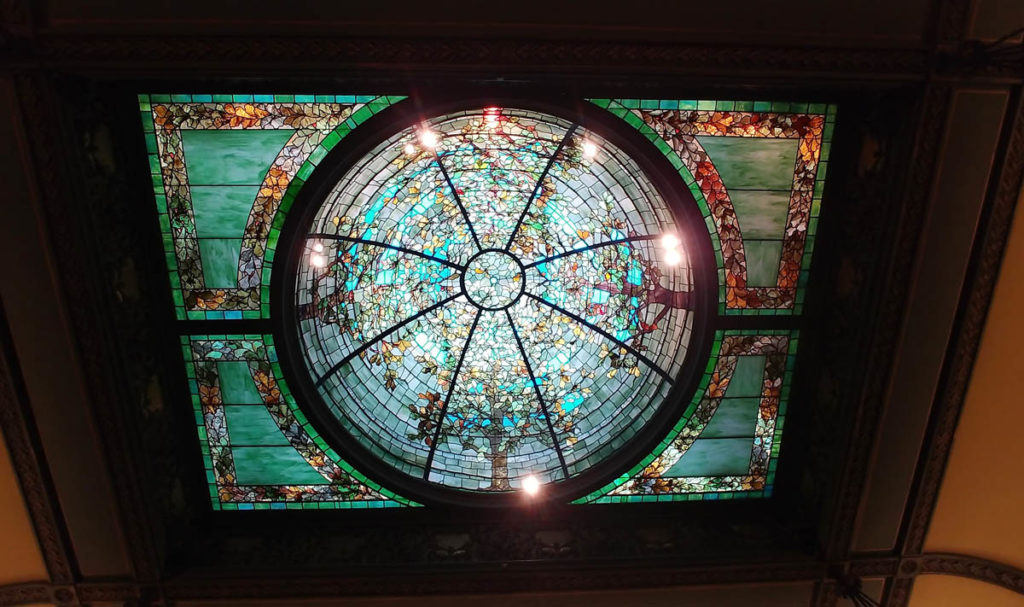
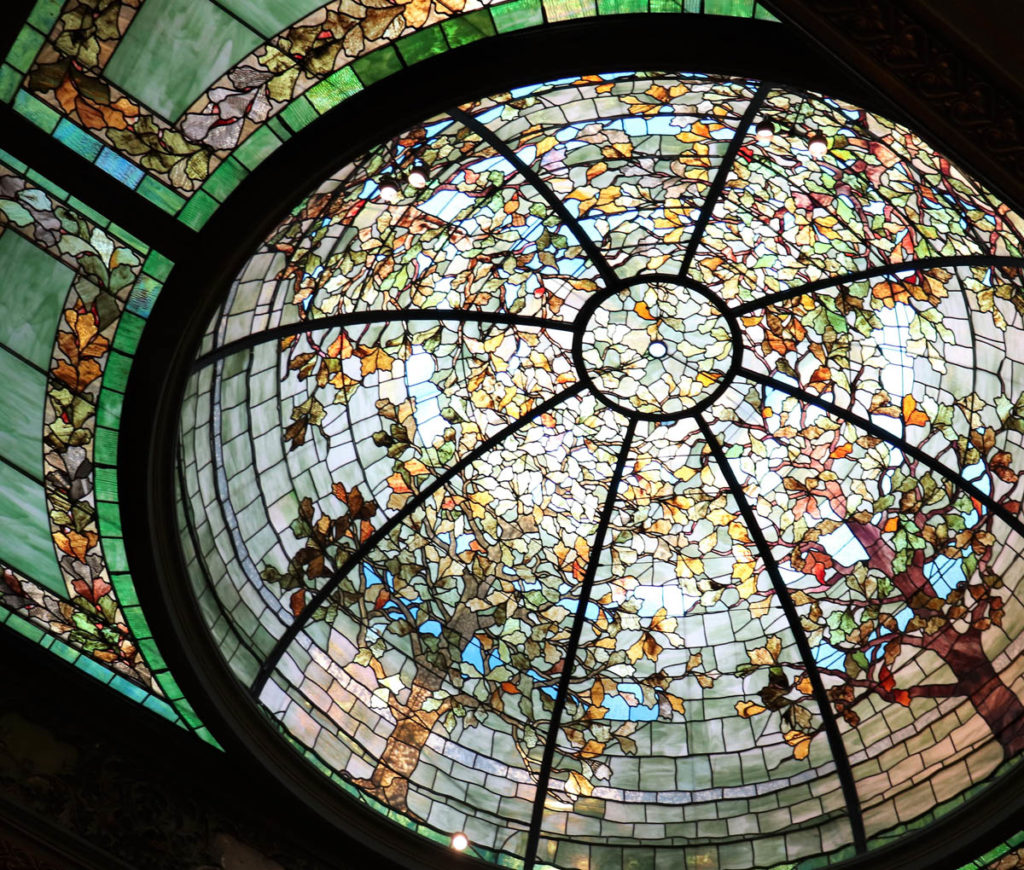
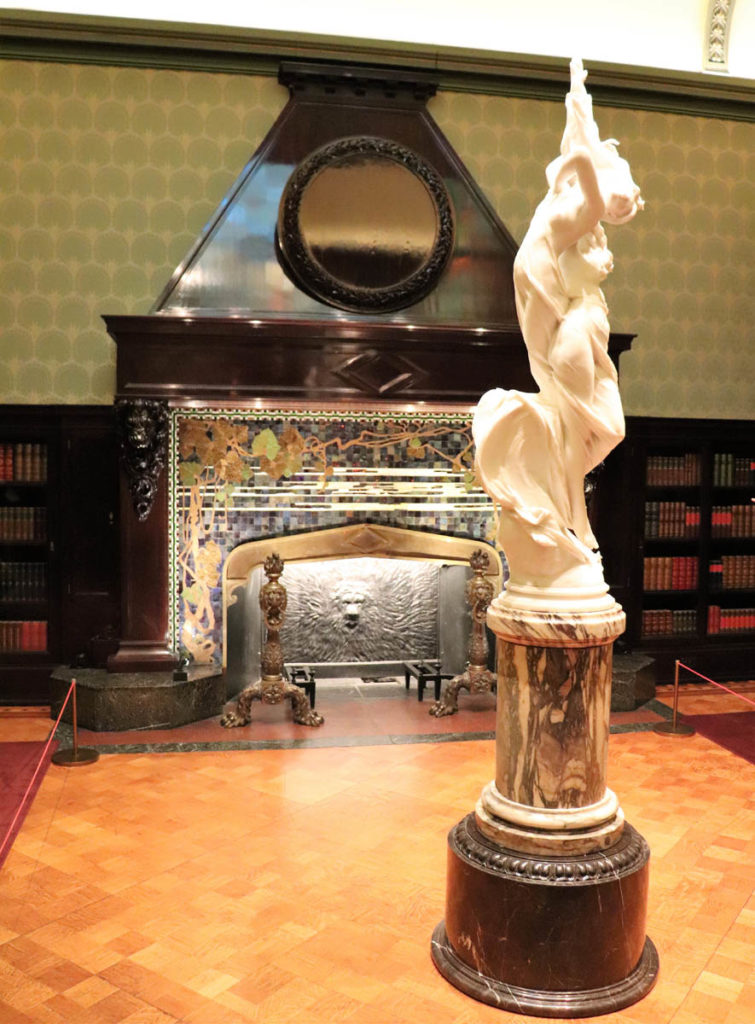
The Fisher family owned the home until Lucius’ death in 1916. For three years, the mansion languished until the threat of demolition loomed.
In what may have been the first successful preservation effort in Chicago, more than one hundred men, women, and businesses pooled their money, bought the place, and gave it to the American College of Surgeons.
The recipients, although thrilled with the gift, needed more room and they couldn’t tear the building down, couldn’t make it bigger, and couldn’t make any structural changes. Their solution was to build the John B. Murphy Memorial Auditorium next door. The College used the two buildings until they outgrew them in 1965 and rented them out.
The first tenant was an advertising firm, followed by R. H. Love Art Gallery. The latter is why the Driehaus Museum exists.
Driehaus Museum Today
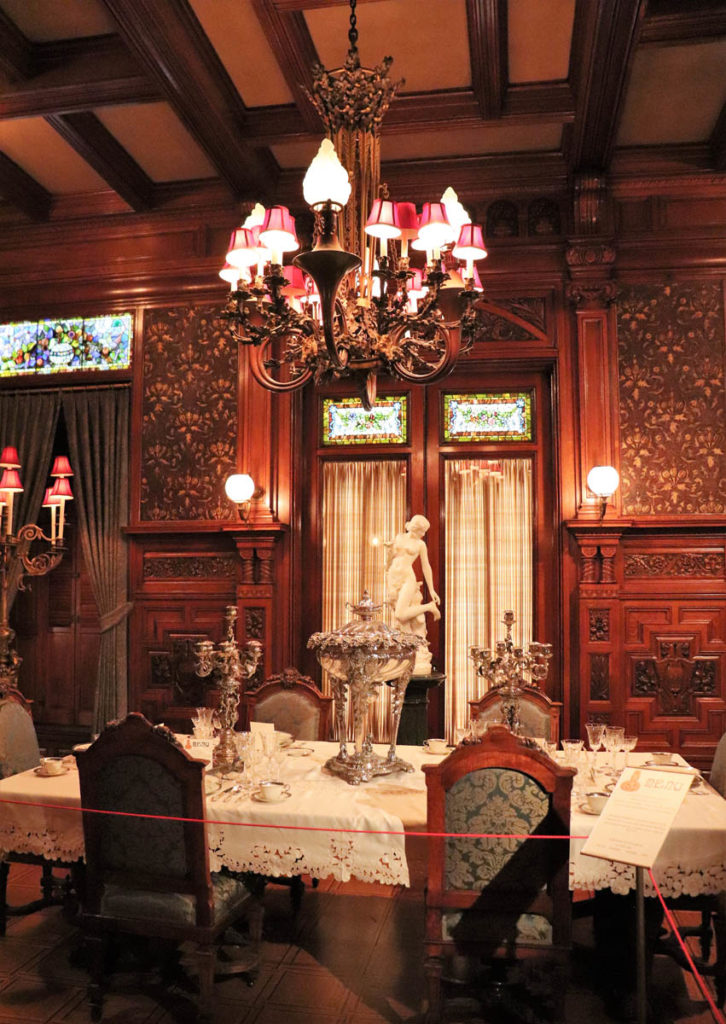
In 2003, super rich guy Richard Driehaus walked into the R. H. Love Art Gallery with an antique dealer. The wealthy art and history aficionado had his eye on a bust of Abraham Lincoln. Buzz Harper, the antique expert, took one look at the mansion and told Mr. Driehaus: “Forget the bust; buy the building!” And so he did.
After five years of painstaking restoration, including employing an innovative technique using lasers to remove soot that had turned its exterior black, the Driehaus Museum invited the public to marvel at this Marble Palace. It’s decorated with pieces from the late 19th and early 20th centuries, and many of the furnishings and decorations are from Mr. Driehaus’s personal collection.
There’s a vast number of Louis Comfort Tiffany items as well as pieces from the 1893 World’s Columbian Exposition and furniture by the Herter Brothers. When you visit, be prepared to gasp. Often.
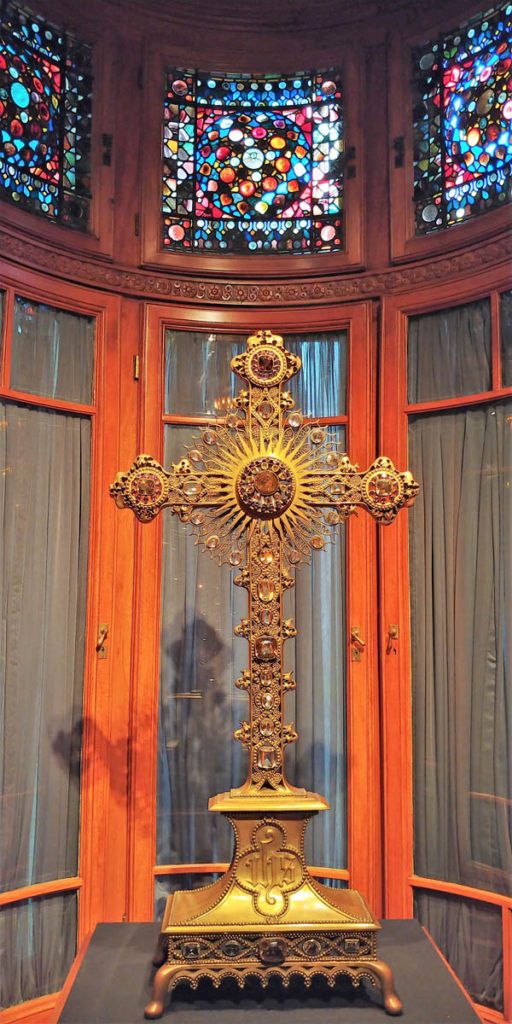

Driehaus Museum; 40 East Erie Street, Chicago, IL 60611, (312) 482 – 8933 driehausmuseum.org
Save this for later:
